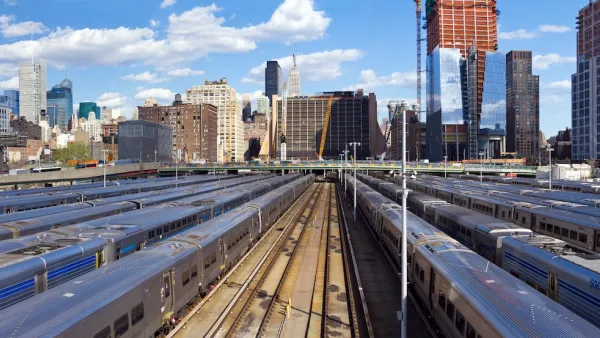A new study conducted by University of Colorado at Boulder, University of Pittsburgh and Duke University says that the scourge of gentrification is greatly exaggerated.
In their study of more than 15,000 neighborhoods across the U.S. in 1990 and 2000, researchers found that low-income, non-white households did not disproportionately leave gentrifying areas.
"In fact, researchers found that at least one group of residents, high school–educated blacks, were actually more likely to remain in gentrifying neighborhoods than in similar neighborhoods that didn't gentrify - even increasing as a fraction of the neighborhood population, and seeing larger-than-expected gains in income.
Those findings may seem counterintuitive, given that the term "gentrification," particularly in cities like New York and San Francisco, has become synonymous with soaring rents, wealthier neighbors and the dislocation of low-income residents. But overall, the new study suggests, the popular notion of the yuppie invasion is exaggerated. "We're not saying there aren't communities where displacement isn't happening," says Randall Walsh, an associate professor of economics at the University of Pittsburgh and one of the study's authors. "But in general, across all neighborhoods in the urbanized parts of the U.S., it looks like gentrification is a pretty good thing."
The researchers found, for example, that income gains in gentrifying neighborhoods - usually defined as low-income urban areas that undergo rises in income and housing prices - were more widely dispersed than one might expect."
FULL STORY: Gentrification: Not Ousting the Poor?

National Parks Layoffs Will Cause Communities to Lose Billions
Thousands of essential park workers were laid off this week, just before the busy spring break season.

Retro-silient?: America’s First “Eco-burb,” The Woodlands Turns 50
A master-planned community north of Houston offers lessons on green infrastructure and resilient design, but falls short of its founder’s lofty affordability and walkability goals.

Delivering for America Plan Will Downgrade Mail Service in at Least 49.5 Percent of Zip Codes
Republican and Democrat lawmakers criticize the plan for its disproportionate negative impact on rural communities.

Test News Post 1
This is a summary

Test News Headline 46
Test for the image on the front page.

Balancing Bombs and Butterflies: How the National Guard Protects a Rare Species
The National Guard at Fort Indiantown Gap uses GIS technology and land management strategies to balance military training with conservation efforts, ensuring the survival of the rare eastern regal fritillary butterfly.
Urban Design for Planners 1: Software Tools
This six-course series explores essential urban design concepts using open source software and equips planners with the tools they need to participate fully in the urban design process.
Planning for Universal Design
Learn the tools for implementing Universal Design in planning regulations.
EMC Planning Group, Inc.
Planetizen
Planetizen
Mpact (formerly Rail~Volution)
Great Falls Development Authority, Inc.
HUDs Office of Policy Development and Research
NYU Wagner Graduate School of Public Service





























